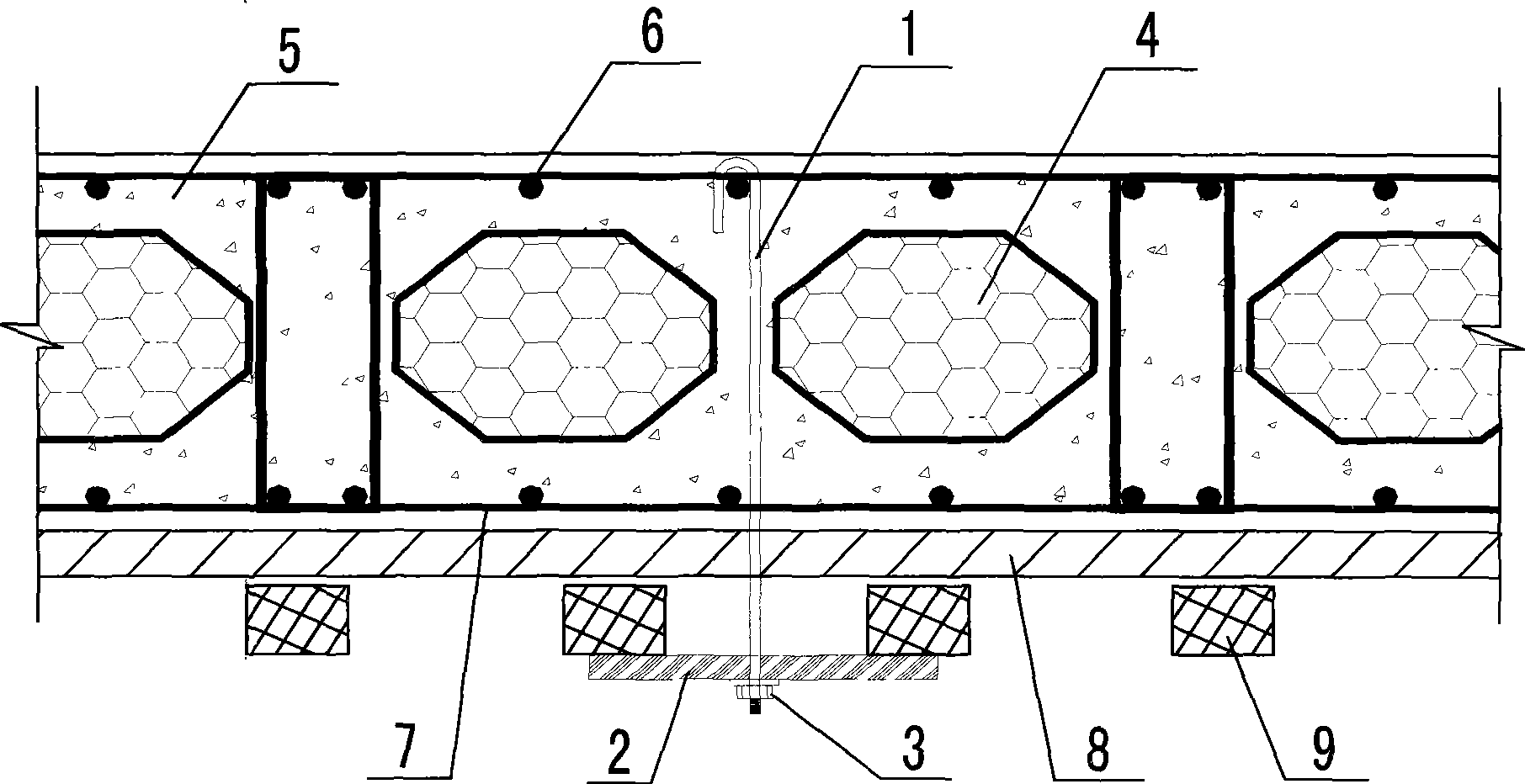Anti-floating construction method for cast-in-place concrete hollow building roof
A hollow floor and construction method technology, applied to the processing of building materials, structural elements, building components, etc., can solve the problems of inability to control more accurately and effectively, troublesome construction, and not easy to find
- Summary
- Abstract
- Description
- Claims
- Application Information
AI Technical Summary
Problems solved by technology
Method used
Image
Examples
Embodiment Construction
[0011] This construction method is realized in the following manner:
[0012] 1. Make steel tie rods (1) and bearing plates (2); install nuts and gaskets (3) corresponding to the threaded ends of the steel tie rods.
[0013] 2. Bind the lower reinforcing bars (7) of the hollow slab, lay the filling material (4), and bind the upper reinforcing bars (6) of the hollow slab.
[0014] 3. According to the anti-floating point layout requirements in the construction organization, drill holes on the formwork (8) at a certain interval.
[0015] 4. The hooks are hung at the long and short intersections of the upper steel bars (6), and the pressure bearing plate (2) is placed perpendicular to the formwork cross brace purlins (9), and then the upper and lower distances are determined according to the relevant plate thickness, and the pressure bearing plate (2) is tightened The following nut (3) fixes the reinforcing bar tie rod (1) on the cross brace purlin (9).
[0016] 5. Pouring concr...
PUM
 Login to View More
Login to View More Abstract
Description
Claims
Application Information
 Login to View More
Login to View More - R&D
- Intellectual Property
- Life Sciences
- Materials
- Tech Scout
- Unparalleled Data Quality
- Higher Quality Content
- 60% Fewer Hallucinations
Browse by: Latest US Patents, China's latest patents, Technical Efficacy Thesaurus, Application Domain, Technology Topic, Popular Technical Reports.
© 2025 PatSnap. All rights reserved.Legal|Privacy policy|Modern Slavery Act Transparency Statement|Sitemap|About US| Contact US: help@patsnap.com


